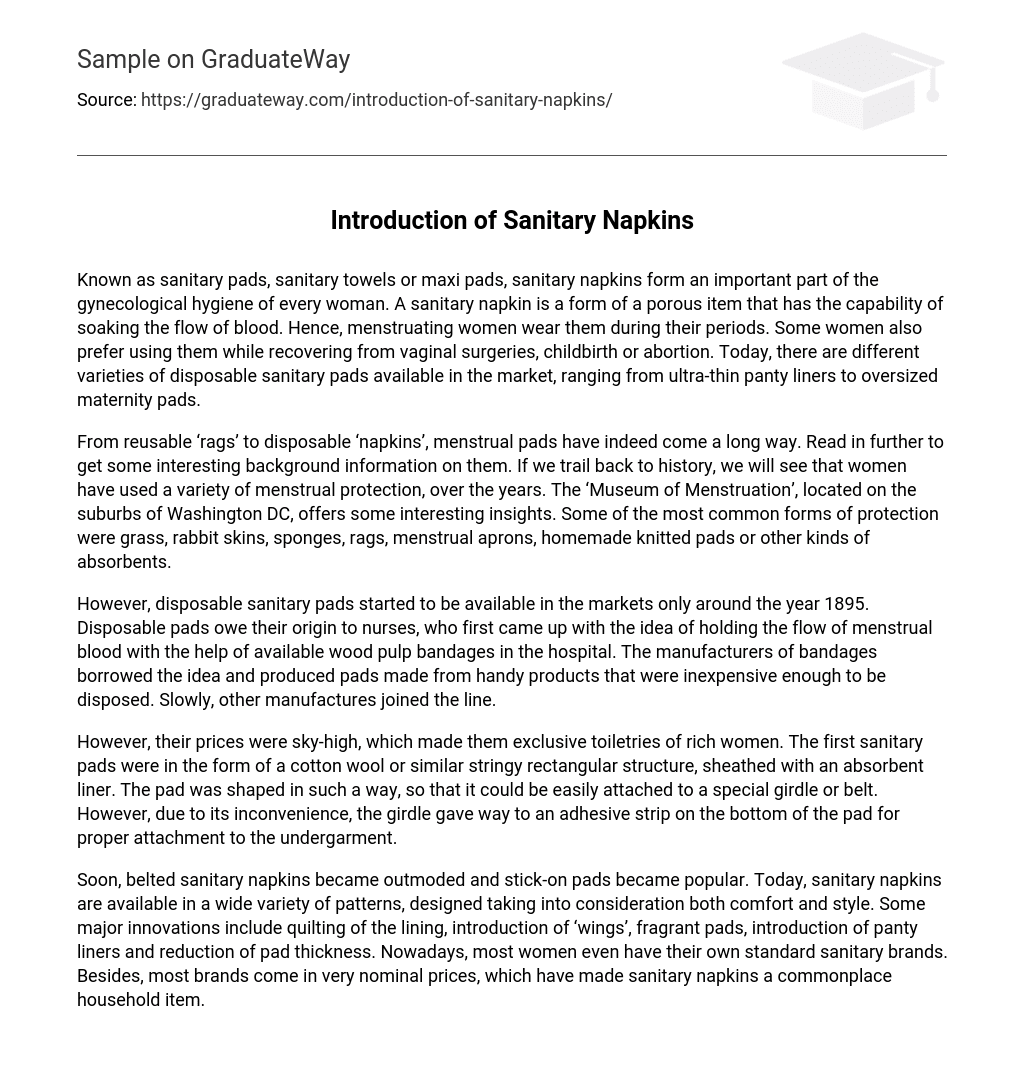Sanitary pads, also known as sanitary towels or maxi pads, are a vital component of women’s gynecological hygiene. They are absorbent items that effectively manage the flow of blood during menstruation, as well as during post-surgical recovery, childbirth, or abortion. The market now offers various disposable sanitary pads, including ultra-thin panty liners and oversized maternity pads.
From ancient times to modern innovations, menstrual pads have undergone significant changes. Discover the intriguing history of these essential products. Looking back, women throughout history have employed various methods of menstrual protection. The ‘Museum of Menstruation’ near Washington DC provides fascinating insights into this topic. Notable methods included using grass, rabbit skins, sponges, rags, menstrual aprons, homemade knitted pads, and other absorbent materials.
Around the year 1895, disposable sanitary pads became available in markets. These pads originated from nurses who used wood pulp bandages to contain menstrual blood in hospitals. Manufacturers of bandages adopted and created pads using affordable materials that could be disposed of. Eventually, other manufacturers followed suit.
Despite being exclusive toiletries for wealthy women, the initial sanitary pads were expensive. They consisted of a cotton wool or similar rectangular structure with an absorbent liner. These pads were designed to easily attach to a special girdle or belt. However, the inconvenient girdle was later replaced with an adhesive strip on the bottom of the pad for improved attachment to undergarments.
Belting sanitary napkins quickly became outdated as stick-on pads gained popularity. Currently, sanitary napkins are offered in various patterns that prioritize both comfort and style. Significant advancements include quilted linings, the introduction of “wings,” fragrant pads, panty liners, and thinner pads. Nowadays, many women have their preferred brands of sanitary napkins, and they are widely available at affordable prices, making them a commonplace household item.





